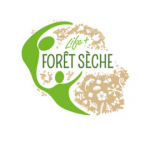
Fostering research excellence
in EU Outermost Regions


Fostering research excellence
in EU Outermost Regions
Published 13.12.2019

La Reunion
| Public Project
The LIFE Forêt Sèche project aims at preserving unique semi-xerophilic forest habitats on Réunion Island and to re-establish the connectivity between restored and relict plots.
Abstract of the project:
Semi-xerophilous (semi-dry) forest is one of the most emblematic habitats of Réunion Island. Today only about 1% of its original area of 56 800 ha remains, scattered in small plots across the western coast (Mafate and Cilaos cirques) and the La Montagne mountain range. The main causes of this regression include heavy demographic pressure, loss of connectivity between relict areas, invasion by exotic species, decline of native species, such as the Réunion Giant Tortoise and day gecko, and the lack of awareness among the local population. Réunion National Park coordinated a previous LIFE project on semi-dry forests (LIFE07 NAT/F/000188 – COREXERUN), which committed the park and its partner to an ambitious conservation project to save the endangered forests. Results from that project pointed out the need for low-cost restoration of greater areas to guarantee long-term conservation success.
The LIFE Forêt Sèche project aims to preserve unique semi-xerophilic forest habitats on Réunion Island and to re-establish the connectivity between restored and relict plots. It demonstrates that the long-term conservation of this habitat can be achieved at lower cost, with a reduction goal of 20%, by the implementation of innovative measures. To achieve this objective, a set of demonstration actions and innovative approaches is implemented in a coordinated and integrated manner. These actions serve to directly and indirectly promote cost-effective conservation on a greater area of the semi-dry forest on Réunion Island.